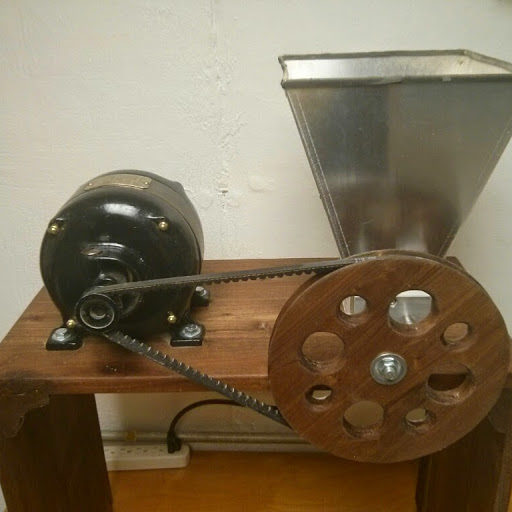I think you are confusing the two common ways of powering a mill.
Many use a medium size electric motor and pair of sheaves or pulleys, with a v-belt. This 'gears down' the out put speed from around 1700 to whatever you are aiming for; generally around 200-250rpms. using this speed reduction system also increases the usable torque of the motor, like any transmission system does.
Others use an AC gearmotor to direct drive the mill by way of a flexible coupling. The speed reduction system is built into the motor by way of a gear reduction system on the output end of the motor. These are rated by rpm and out put torque although they also are commonly rated by hp, too.
I have seen recommendations of 1/3 hp and around 50 in/lbs of torque, although pinning this down exactly is open to variables such as how long the mill rollers are and what type of power is being used to run the mill.
Bodine gearmotors are popular due to the variety and availability.
I used their website to plan my mill station.
http://www.bodine-electric.com/Asp/ProductGroup.asp?Context=8
I was interested in the 42R-E Parallel series. I think the 48R-F series is a bit of overkill.
I was aiming for a 115 rpm motor, with 68 in/lbs., #0651, but chickened out on bidding, then found the 0650 @170rpm and 45 in/lbs., new, for a buy it now price and jumped. It is a very substantial motor and I believe it will work fine although I have to buy my mill yet. It is much more substantial than a cordless drill... I have powered it and it is impressive. It does not require an additional capacitor, as many do. I still need to build a stand and wire it, but it's been ambition-killing cold around here for quite a while...
http://www.bodine-electric.com/Asp/...Name=42R-E Series Parallel Shaft AC Gearmotor
Many are currently searching for gear motors, so competition is tighter than it used to be but I got a new Bodine for $59. List = $312.
IIRC, the BC is a short roller mill and since less grain is going thru it at one time, than say, a longer roller type, like C&S and Monster, you should be able to get away with a proportionally smaller amount of torque than those other mills.
-Won't direct display-






